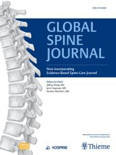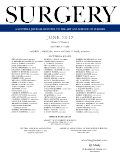
Turkish Neurosurgery
Scope & Guideline
Fostering Collaboration in Clinical Neurology and Surgery
Introduction
Aims and Scopes
- Neuro-oncology and Tumor Management:
Research on various brain and spinal tumors, including gliomas, meningiomas, and their treatment strategies, focusing on surgical techniques, molecular markers, and novel therapeutic approaches. - Neurovascular Surgery:
Studies on the management of intracranial aneurysms, arteriovenous malformations, and cerebrovascular accidents, including endovascular techniques and surgical outcomes. - Spinal Disorders and Surgery:
Exploration of degenerative spinal diseases, surgical interventions for spinal deformities, and the effectiveness of minimally invasive surgical techniques. - Neurotrauma and Critical Care:
Investigations into traumatic brain injury, subarachnoid hemorrhage, and associated complications, aiming to improve patient outcomes through evidence-based practices. - Neurophysiology and Functional Neurosurgery:
Research focusing on the physiological aspects of neurological disorders, including deep brain stimulation and its effects on various conditions like Parkinson's disease. - Pediatric Neurosurgery:
Studies addressing unique challenges in pediatric neurosurgery, including congenital malformations, tumors, and treatment outcomes for children. - Innovative Surgical Techniques and Technologies:
Development and evaluation of new surgical methods, application of robotic surgery, and the use of advanced imaging techniques in neurosurgery.
Trending and Emerging
- Molecular and Genetic Research in Neurosurgery:
There is an increasing focus on the molecular and genetic underpinnings of neurological diseases, particularly in gliomas and other brain tumors, as researchers aim to tailor treatments based on genetic profiles. - Endovascular Techniques and Innovations:
A notable trend towards the exploration of endovascular approaches for treating cerebrovascular disorders, including advancements in stent technology and embolization techniques. - Minimally Invasive Surgery:
An uptick in studies addressing minimally invasive surgical techniques, which aim to reduce patient recovery time and surgical complications, reflects a significant shift in surgical practice. - Artificial Intelligence and Machine Learning Applications:
Emerging research on the application of AI and machine learning in neurosurgery for predictive analytics, surgical planning, and improving patient outcomes is gaining prominence. - Patient-Centered Outcomes and Quality of Life Assessments:
An increasing emphasis on evaluating patient-reported outcomes and quality of life following neurosurgical interventions indicates a growing recognition of the importance of patient-centered care. - Neurosurgical Education and Training:
Research focusing on the education and training of neurosurgeons, including novel teaching methods and assessment tools, has become more prevalent as the field evolves.
Declining or Waning
- Traditional Neurosurgical Techniques:
There is a declining emphasis on classical approaches to neurosurgery as newer, less invasive techniques gain popularity, reflecting a shift towards minimally invasive surgery. - Historical Perspectives in Neurosurgery:
Research focusing on historical accounts and past practices in neurosurgery has decreased, with contemporary clinical and technological advancements taking precedence. - General Anesthesia in Neurosurgery:
Studies specifically addressing the use of general anesthesia in neurosurgical procedures are less frequent, possibly due to a growing interest in regional anesthesia and sedation techniques. - Non-Surgical Management of Neurological Disorders:
A decrease in publications related to conservative management strategies for neurological conditions, as there is a stronger focus on surgical interventions and innovative therapies. - Complications in Neurosurgery:
While still relevant, the frequency of studies solely dedicated to complications and adverse outcomes has diminished, as the field shifts towards preventive strategies and improving surgical techniques.
Similar Journals

PEDIATRIC SURGERY INTERNATIONAL
Transforming children's surgical care through research.Pediatric Surgery International, an esteemed journal published by Springer, serves as a vital platform for the dissemination of cutting-edge research in the field of pediatric surgery. Renowned for its rigorous peer-review process, this journal has established itself as a crucial resource for professionals, researchers, and students dedicated to improving surgical outcomes for children. With an ISSN of 0179-0358 and an E-ISSN of 1437-9813, it encompasses a wide range of topics relevant to the specialty and retains a significant impact factor, reflecting its standing in the medical community. As of 2023, it is ranked Q2 in multiple categories, including Medicine (Miscellaneous), Pediatrics, Perinatology and Child Health, and Surgery, emphasizing its relevance across interrelated fields. With its commitment to advancing knowledge and practice in pediatric surgery, Pediatric Surgery International is a must-read for anyone involved in the medical care of children, fostering innovation and collaboration in this critical area of medicine.

Brazilian Neurosurgery-Arquivos Brasileiros de Neurocirurgia
Bridging Ideas and Expertise in NeurosurgeryBrazilian Neurosurgery-Arquivos Brasileiros de Neurocirurgia, published by GEORG THIEME VERLAG KG, is a distinguished peer-reviewed open access journal that has been making significant contributions to the field of neurosurgery since its transition to open access in 2015. This Brazilian journal, which is accessible to a global audience, aims to disseminate high-quality research articles, reviews, and case reports that enhance the understanding and practice of neurosurgery and clinical neurology. Despite its current ranking in the Q4 category for both neurology and surgery in 2023, the journal is committed to improving its impact and accessibility for researchers, medical professionals, and students worldwide. As an important platform for innovative ideas and discussions, it takes pride in publishing scientifically rigorous content that informs and shapes the future of neurosurgical practices. With the rise of open access publishing, Brazilian Neurosurgery aligns itself with contemporary trends, making vital research readily available to its diverse readership while nurturing academic collaborations within the neurosurgical community.

Indian Journal of Neurosurgery
Fostering Collaboration for Cutting-Edge Neurosurgical SolutionsIndian Journal of Neurosurgery, published by GEORG THIEME VERLAG KG, serves as a pivotal resource in the field of neurosurgery and clinical neurology. With an ISSN of 2277-954X and E-ISSN 2277-9167, this Open Access journal has made significant strides since its transition to an accessible format in 2012, ensuring that groundbreaking research is available to the global scientific community. The journal, situated in Stuttgart, Germany, aims to publish high-quality and innovative research, reviews, and discussions that address contemporary challenges in neurosurgery. Despite its recent ranking of 465/551 in Medicine (Surgery) and 361/400 in Medicine (Neurology - clinical), with percentiles of 15% and 9% respectively, the Indian Journal of Neurosurgery fosters a platform for emerging ideas that can propel advancements in neurosurgical practices. Researchers, professionals, and students are encouraged to contribute to and benefit from this dynamic publication, which continues to influence the evolution of neurosurgical knowledge and practices.

NEUROLOGY INDIA
Uniting Expertise for a Deeper Understanding of NeurologyNEUROLOGY INDIA, a reputable journal published by Wolters Kluwer Medknow Publications, serves as a pivotal resource in the field of neurology, focusing on clinical and research insights from India and beyond. Established in 1965, this journal has embraced a rich publishing history, converging its years of publication with the intention of fostering knowledge exchange among healthcare professionals, researchers, and students. With an ISSN of 0028-3886 and E-ISSN 1998-4022, it is indexed and ranked in Quartile 3 for both Neurology and Clinical Neurology categories as of 2023. While it does not operate as an open-access journal, it remains an essential platform for disseminating high-quality research, contributing significantly to the understanding of neurological diseases and treatment options. Operating out of Mumbai, India, NEUROLOGY INDIA is committed to bridging the gap in global neurology discourse, and it stands as an important reference for practitioners and scholars seeking to advance their expertise in this critical area of medicine.

NEUROSURGICAL REVIEW
Pioneering insights in the realm of neurosurgery.NEUROSURGICAL REVIEW is an esteemed journal dedicated to advancing the field of neurosurgery, published by Springer, one of the leading global publishers in academic research. With a distinguished history dating back to 1978, this influential journal serves as a vital resource for researchers, practitioners, and students, providing a platform for high-quality original research, case studies, and reviews that push the boundaries of knowledge in neurosurgery. The journal enjoys a remarkable reputation, holding a Q1 ranking in Medicine (miscellaneous) and Surgery, alongside a robust Q2 in Clinical Neurology as reported in 2023. Furthermore, it is recognized in Scopus with notable rankings, placing it in the 88th percentile in Surgery and the 68th percentile in Clinical Neurology. Although it does not offer open access, NEUROSURGICAL REVIEW remains pivotal in disseminating critical findings and fostering collaboration within the neuroscience community. As it continues to evolve through its convergence years up to 2024, the journal aims to address emerging challenges and innovations in the field, making it an essential publication for anyone involved in neurosurgical research and practice.

CESKA A SLOVENSKA NEUROLOGIE A NEUROCHIRURGIE
Advancing Neurological Insights Since 1973CESKA A SLOVENSKA NEUROLOGIE A NEUROCHIRURGIE is a prominent scientific journal focusing on the fields of neurology and neurosurgery, published by the esteemed Czech Medical Society. Since its inception in 1973, the journal has aimed to disseminate significant research and advancements in clinical neurology and surgery, contributing to the body of knowledge for professionals and researchers in these fields. Operating under a non-open access model, it maintains a dedicated readership interested in valuable insights from the latest studies and clinical practices. The journal is currently classified in the Q4 category in both Neurology (Clinical) and Surgery, reflecting its ongoing efforts to provide a platform for impactful research, despite being ranked in the lower percentiles within Scopus. Based in Prague, Czech Republic, this journal not only serves as a repository of clinical findings but also encourages collaboration and scholarly dialogue among neurologists and neurosurgeons, driving the field towards further innovations in patient care. With coverage extending from 1973 to 2024, it stands as a key resource for those committed to advancing neurological and surgical sciences.

Global Spine Journal
Advancing Spine Health Through Global ResearchGlobal Spine Journal is a premier, peer-reviewed publication dedicated to advancing knowledge in the fields of orthopedics, neurology, and surgery. Published by SAGE Publications Ltd since 2015, this Open Access journal fosters a dynamic exchange of research focused on the complexities of spinal disorders, promoting cutting-edge treatments and innovative methodologies. With an impressive impact factor and ranking within the top quartile (Q1) of its categories—Clinical Neurology, Orthopedics and Sports Medicine, and Surgery—Global Spine Journal is recognized for its contributions to both clinical practice and academic discourse. Researchers, practitioners, and students alike will find a wealth of valuable insights and evidence-based studies that impact patient care and enhance therapeutic outcomes in spine health. For more information, visit our website and join our commitment to improving global spine health.

JOURNAL OF CLINICAL NEUROSCIENCE
Advancing the Frontiers of Neurological ResearchJOURNAL OF CLINICAL NEUROSCIENCE is an esteemed publication dedicated to advancing the field of neurology and related medical disciplines. Published by ELSEVIER SCI LTD, this journal serves as a vital resource for researchers, clinicians, and educators, providing a platform for the dissemination of high-quality research findings since its inception in 1994. With a noteworthy impact factor and ranked within the Q2 and Q3 categories across various medical specialties, including neurology and surgery, the journal positions itself at the forefront of clinical neuroscience. Although it operates under a traditional subscription model, the journal’s commitment to publishing rigorous scientific work ensures that it remains an integral reference for anyone involved in the diagnosis, treatment, and understanding of neurological disorders. Readers can access a diverse array of articles that not only highlight current research trends but also foster the exchange of innovative ideas in clinical practice.

Neurochirurgie
Bridging Research and Clinical Practice in NeurosurgeryNeurochirurgie, published by MASSON EDITEUR, stands as a prominent peer-reviewed journal in the fields of neurology and surgery, reflecting its commitment to advancing clinical practices and surgical innovations. With an impressive history dating back to 1955 and a convergence period extending to 2024, this journal serves a vital role in disseminating comprehensive research and updates relevant to both medical practitioners and researchers. Neurochirurgie holds a respectable Q3 ranking in clinical neurology and a Q2 ranking in surgery as of 2023, positioning it within the upper echelons of medical journals; its Scopus rankings further underline its growing influence, particularly in the surgical domain. Despite its non-open access model, the journal offers a platform where high-quality, rigorously vetted studies can be accessed, fostering an environment of knowledge exchange that is essential for the ongoing development of neurosurgical practices. For researchers, professionals, and students alike, Neurochirurgie presents an invaluable resource for staying at the forefront of neurological research and surgical advancements.

SURGERY
Elevating surgical practices through comprehensive reviews.SURGERY, an esteemed journal published by MOSBY-ELSEVIER, stands at the forefront of medical literature in the field of surgical practices and innovations. With a rich history dating back to its inception in 1937, this journal has consistently provided cutting-edge research and comprehensive reviews aimed at enhancing surgical outcomes and techniques. It proudly holds a prestigious Q1 classification in Surgery as per the 2023 category quartiles, ranking #68 out of 551 in the Scopus database, placing it in the top 87th percentile within its category. This makes SURGERY an essential resource for researchers, practitioners, and students alike, providing valuable insights and advancements that shape surgical methodologies around the globe. Although it is not an open-access journal, its authoritative content and accessibility through institutional subscriptions ensure that the latest surgical research is available to scholars and healthcare professionals. Engage with a community dedicated to excellence in surgical science and practice through SURGERY, where every article contributes to the progression of medical knowledge and patient care.